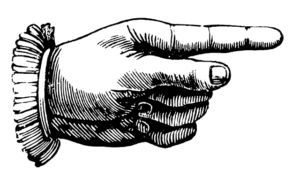
by Wilton H. Strickland
It is often possible to dismiss a complaint for defects that are readily apparent. I’ve discussed several of these defects before, but there is one type of complaint that is almost always defectively pleaded: the third-party complaint. For whatever reason, a large amount of confusion surrounds this simple device for shifting blame to other parties. I will explain the narrow purpose of a third-party complaint (under the Federal Rules of Civil Procedure) in an effort to help all litigants make sure that any such complaint is valid.
The Narrow Purpose Of A Third-Party Complaint: Shifting Blame For The Liability At Issue In The Main Complaint
When a person is sued and named as a defendant, it’s a natural reaction to bring in all the other people who played a role in the dispute so as to resolve everything in one fell swoop. Indeed, most of the third-party complaints I’ve dealt with during my career operate on this assumption — that anyone who played a role in the case may be brought into it as a third-party defendant. This is wrong.
Rule 14 of the Federal Rules of Civil Procedure governs third-party complaints and reads in pertinent part as follows (emphasis added):
Rule 14. Third-Party Practice.
(a) When a Defending Party May Bring in a Third-Party.
(1) Timing of the Summons and Complaint. A defending party may, as third-party plaintiff, serve a summons and complaint on a nonparty who is or may be liable to it for all or part of the claim against it. . . .
The Rule thus requires that a third-party complaint attempt to pass along some or all of the liability alleged in the main lawsuit; a claim that does not transfer the liability in the main lawsuit is not contemplated by Rule 14 and cannot support a third-party complaint.
For example, if someone sues me for malpractice, I cannot file a third-party complaint against my insurer for coverage, since the insurer is not to blame for the alleged malpractice. I could, on the other hand, file a third-party complaint against my employee alleging that he or she is to blame for harming the client. A simpler way of expressing the argument of a third-party complaint is this: “they did it.”
A large number of federal decisions dismiss third-party complaints for failing to grasp this point, and courts often emphasize that it makes no difference whether a third-party complaint arises from the same facts at issue in the main complaint. As one court put it: “The crucial characteristic of a Rule 14 claim is that defendant is attempting to transfer to the third-party defendant the liability asserted against him by the original plaintiff. The mere fact that the alleged third-party claim arises from the same transaction or set of facts as the original claim is not enough.” Stewart v. Am. Int’l Oil & Gas Co., 845 F.2d 196, 199, 200 (9th Cir. 1988).
The Two Possible Theories For Third-Party Relief: Contribution Or Indemnity
Since a third-party complaint is not a broad stage for airing a defendant’s grievances, but rather a small podium from which to identify other parties responsible for the plaintiff’s damages, the only type of claim that should be asserted is for contribution or indemnity. Any other theory of relief is a strong signal that the third-party complaint is defective.
Yet even the simple mechanisms of contribution and indemnity are themselves often shrouded in confusion.
“Contribution” means that the defendant bears at least some fault for the plaintiff’s damages, but that someone else also bears fault and should be held accountable for it. For example, if two cars crash into a plaintiff’s house yet the plaintiff sues only one driver for all of the damages, that driver may file a third-party claim for contribution against the other driver.
“Indemnity” is often alleged side-by-side with contribution, but it is very different and warrants dismissal unless unique circumstances are in play. A claim for indemnity attempts to shift all of the blame to another party who has a legal obligation to take responsibility for it. Such an obligation can be by contract, statute, or an agency relationship such as between employer and employee. The mistake often made in third-party complaints is to allege that another party is 100% to blame for the plaintiff’s damages, but this is insufficient to support an indemnity claim without a special legal obligation on the other party.
Conclusion
There are many other aspects of a third-party complaint that fall beyond the scope of this article. However, by keeping in mind the third-party complaint’s narrow purpose and discrete theories of relief, plaintiffs as well as defendants can make the best use of them.


